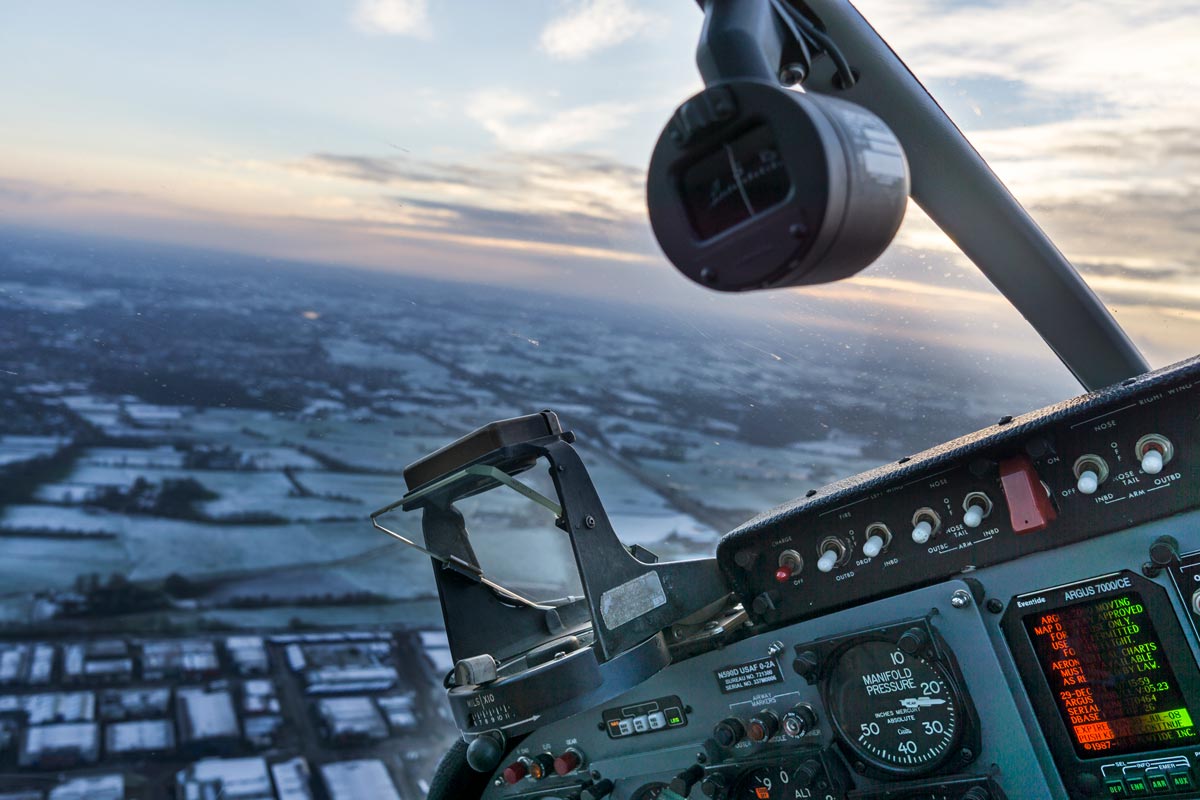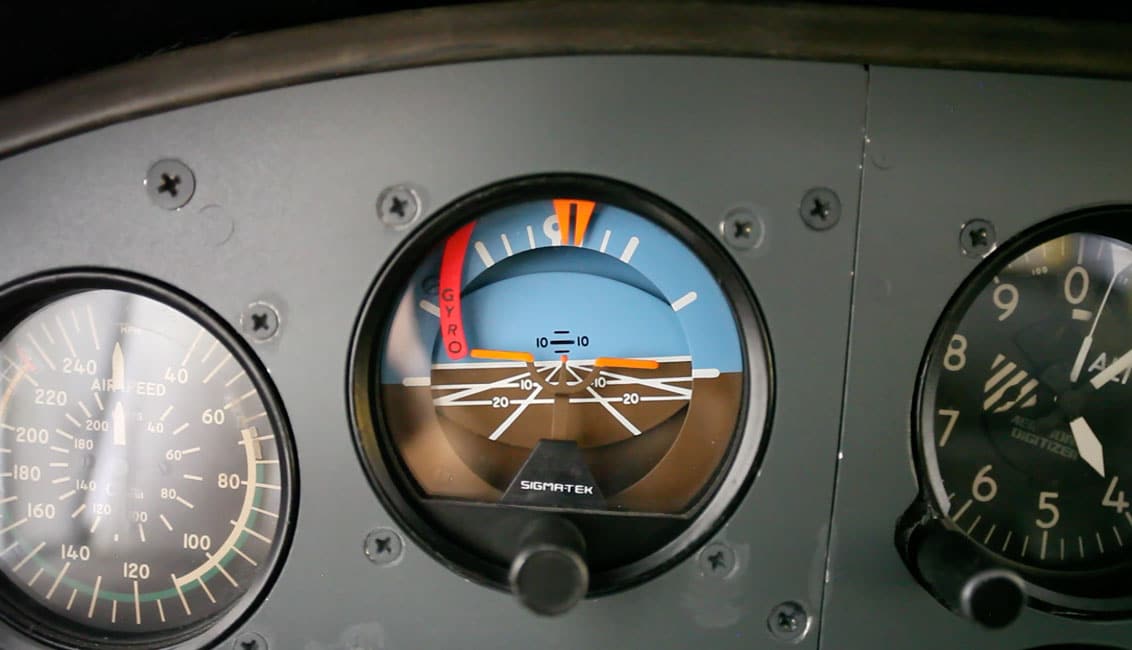The FAA SAFOs contain important safety information and may also contain recommended actions.
The FAA recently issued two SAFOs (Safety Alerts For Operators) regarding attitude indicator and updated evaluation standards for slow flight and stall training when it comes to private and commercial pilot certification.
More Infomation on SAFO 17008 Regarding Attitude Indicators
The FAA says that they’re issuing SAFO 17008 in order to bring “potential operational limitations of some
attitude indicators in the event of unusual attitude recovery” to the attention of aircraft operators following a safety recommendation from the NTSB (National Transporation Safety Board).
During their investigation into an accident involving a Eurocopter AS350 operating in Alaska, the NTSB noted in their accident report (NSTB/AAR-14/03)1 that the aircraft had an attitude indicator installed that only met the minimum pitch indication of plus/minus 25 degree required by the FAA TSO (Technical Standard Order) C4C.2 According to that TSO, the range of indication in pitch needs to be at least plus or minus 25 degrees, while the range of indication in bank needs to be at least plus or minus 100 degrees.
The FAA notes that on page 8-19 of the Pilot’s Handbook of Aeronautical Knowledge, the following information is provided regarding pitch and bank limits3:
“The pitch and bank limits depend upon the make and model of the instrument. Limits in the banking plane are usually from 100° to 110°, and the pitch limits are usually from 60° to 70°. If either limit is exceeded, the instrument will tumble or spill and will give incorrect indications until realigned. A number of modern attitude indicators do not tumble.”
However, the agency does also note that the PHAK doesn’t make reference to the minimum design limitations laid out by TSO-C4C. So, the agency is issuing SAFO 17008, in order to further inform aircraft operators that attitude indicators which only display the required minimum pitch indication of plus-minus 25 degrees vertically, they “could ‘peg’ at this maximum or minimum pitch indication or ‘tumble’ and provide erroneous pitch and bank indications when the aircraft exceeds these limits.” This, in turn, could be extremely hazardous to aircraft operating in instrument meteorological conditions or confuse the pilot during an unusual attitude recovery.
For anyone with questions regarding SAFO 17008 (which can be viewed here), the FAA says to contact the General Aviation and Commercial Division, AFS-800, at (202) 267-1100.
 Earning a Black Belt in Stall Prevention
Earning a Black Belt in Stall Prevention
As a newly rated pilot, how much time did you spend in stall prevention training? My typical aviation audience estimates spending three to five hours practicing stall awareness, recognition, and recovery. Let’s subtract the time lost to the peripheral events associated with doing stalls: clearing turns, climbs to altitude, maneuvering, etc. After all, clearing turns are important, but they don’t teach you anything about stalls, do they? [Read More]
More Infomation on SAFO 17009 Regarding Certification Standards for Slow Flight and Stalls
SAFO 17009 is being issued to advise the general aviation community of upcoming changes to the evaluation standards for the slow flight task and certain stall tasks in both the Private Pilot and Commercial Pilot – Airplane ACS (airman certification standards), which will become effective June 12, 2017.
The agency notes that loss of control in flight continues to be the leading cause of fatal accidents in both general aviation and commercial aviation worldwide. As a result, agencies like the NTSB have maintained a strong focus on preventing loss of control accidents. And in June 2016, when the FAA released the new Private Pilot – Airplane ACS, they revised the slow flight evaluation standard to reflect maneuvering without a stall warning cue such as an aircraft buffet or stall horn. They then issued SAFO 16010 to explain the change as one approach to addressing loss of control accidents in flight.
However, the FAA has since received additional feedback from the general aviation community, prompting the new changes, and issuance of SAFO 17009 (the agency notes that this SAFO is replacing SAFO 16010) to explain the changes. According to the agency, one of the primary concerns was that “because a pilot would no longer be evaluated while flying at slow speeds with the airplane near the critical angle of attack (AOA),” that pilot would not receive training or become proficient at maneuvering under these conditions, or even understand “what happens beyond the stall warning.”
In SAFO 16010, the FAA asserted, and maintains, their position that “a pilot is still expected to know and
understand the aerodynamics behind how the airplane performs from the time the stall warning is
activated to reaching a full stall.” They also believe that the pilot can acquire the necessary knowledge during ground training, and put in into practical use while practicing the Stall Task skills in the ACS. Finally, they still consider it a pilot’s “fundamental responsibility” to prevent a loss of control, by:
- Understanding how an airplane performs “in the slow flight regime and how it performs from the stall
warning to the critical AOA, or stall, if flight continues past the initial stall warning.“ - Being proficient at controlling the airplane when in slow flight.
- Being able to recognize both an impending stall and a full stall if they occur
- Being proficient in performing a stall recovery procedure.
That being said, the agency notes that after reviewing the entire Slow Flight and Stalls Area of Operation sections, they decided to again revise the evaluation standards for certain tasks on the private pilot airplane and commercial pilot airplane practical tests.
The FAA recommends that the following groups:
- Student pilots
- Flight instructors and flight instructor applicants
- Flight schools, Part 141 pilot schools, Part 142 training centers
- Evaluators for the Private Pilot – Airplane and Commercial Pilot – Airplane practical tests
All familiarize themselves with the information in SAFO 17009 (which you can view here) and adjust their training and testing for the slow flight maneuver and stall tasks accordingly. For more questions or comments regarding this SAFO, you can contact the General Aviation and Commercial Division, AFS-800, at 202-267-1100.
Sources and References:
1 – Accident Report AAR/14/03, NTSB, Retrieved 6-8-17
2 – TSO-C4C, FAA, Retrieved 6-8-17
3 – Pilot’s Handbook of Aeronautical Knowledge, FAA, Retrieved 6-8-17















Leave a Reply